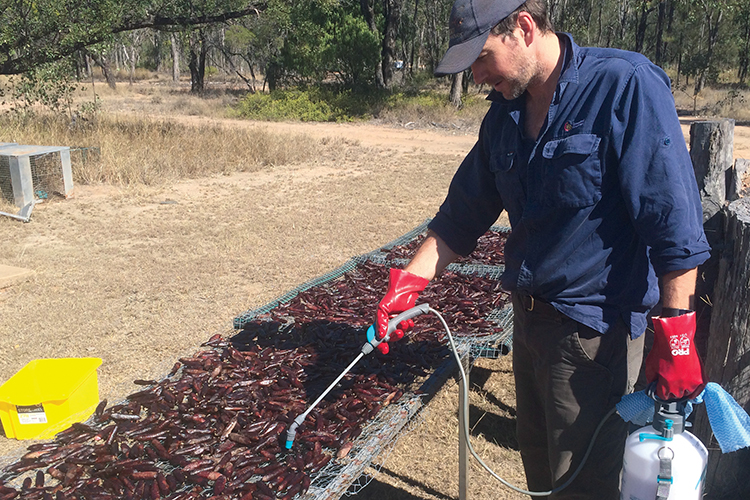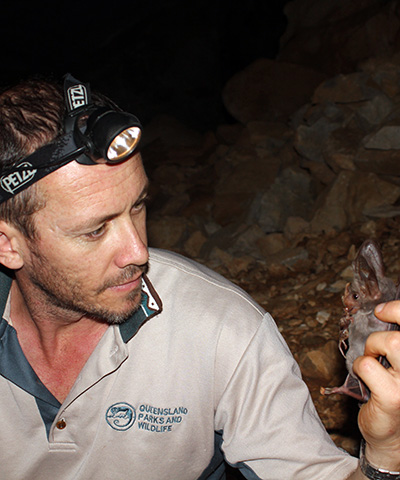
Project: 1.1.3
Feral cat control for threatened species in Queensland
Project Leaders: Matthew Gentle , Sarah Legge , Diana Fisher , Tony Pople
Why is the research needed?
Once commonly found throughout eastern Australia, bridled nailtail wallabies suffered range and population declines after European settlement and became restricted to a small population at Taunton National Park (Scientific).
The reasons for these declines are thought to include vegetation change, competition for food and shelter, and especially predation pressure by foxes throughout their former range, and more recently dingoes and cats at Taunton (where foxes are absent).
More species are listed as threatened by cats than by any other invasive predator in Australia. Eradication of cats on the mainland is not currently feasible using available control techniques, thus we need to determine a threshold of effective control for cats, above which native prey can persist.

The study will contribute to the Threatened Species strategy’s aim of improving environmental management to reduce the impacts of feral cats. It aims to improve the conservation status of endangered and vulnerable mammals in Queensland that are threatened by cats.
Project outcomes will include:
- data that will enable managers to decide which of the currently available cat control strategies provide optimal benefits to wildlife, and are most efficient and cost-effective in central and western Queensland national parks;
- evidence-based estimates of the prey response to feral cat control, and the recommended magnitude and timing of cat control required to provide benefits to threatened mammals in Queensland; and
- potential increases in population size of mammals affected by cat predation at the bait-testing sites of Taunton and Currawinya, including bridled nailtail wallabies.
What research activities are being undertaken?
At Taunton National Park (Scientific), we collected data on recruitment and distribution of bridled nailtail wallabies before and after the Eradicat baiting program.
Capture-mark-recapture is being used to determine the impact of the cat control on bridled nailtail wallabies, in particular, the survival of young-at-foot to weaning.
The project is a collaborative study involving Biosecurity Queensland (DAF), Queensland DES, and the University of Queensland (UQ). The feral cat control component and student support is being funded through the Queensland Government Feral Pest Initiative, Biosecurity Queensland and Queensland DES. The Threatened Species Recovery Hub and UQ also fund student support.

The work will be carried out in at least two national parks in central and western Queensland.
When is the research happening?
The project will run for five years from 2016 to 2021.
For more information please contact:
Matt Gentle Matthew.Gentle@daf.qld.gov.au
Top image: Feral cat. Photo: Joe Scanlan, QDAF












